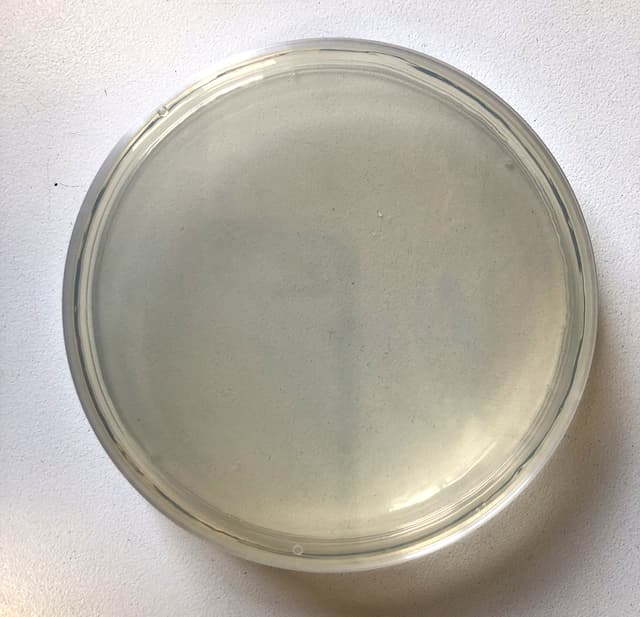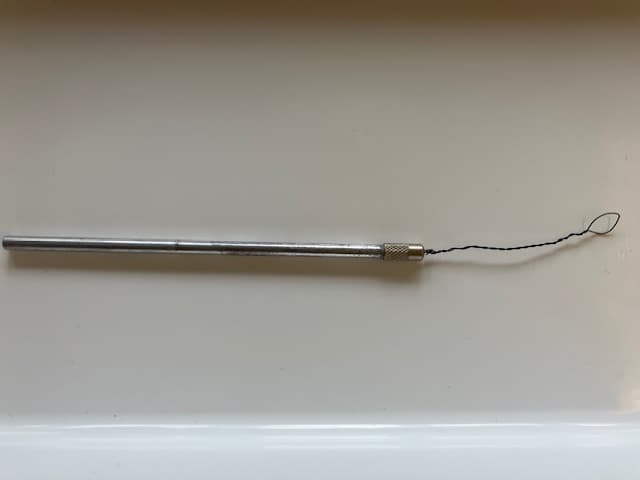Myths about teaching can hold you back
- Year 11
- OCR
- Higher
The effect of antimicrobial substances on bacterial growth: practical
I can use aseptic techniques to investigate the effect of antimicrobial substances on bacterial growth.
- Year 11
- OCR
- Higher
The effect of antimicrobial substances on bacterial growth: practical
I can use aseptic techniques to investigate the effect of antimicrobial substances on bacterial growth.
These resources were made for remote use during the pandemic, not classroom teaching.
Switch to our new teaching resources now - designed by teachers and leading subject experts, and tested in classrooms.
Lesson details
Key learning points
- Uncontaminated cultures of microorganisms are required to investigate the action of antimicrobials.
- Bacteria can be grown on an agar plate using aseptic techniques.
- Examples of aseptic techniques used in culturing bacteria.
- Discs soaked in antimicrobial substances can be used to investigate their effect on bacterial growth.
Keywords
Aseptic technique - Practical methods used to prevent contamination by unwanted microorganisms.
Agar plate - A Petri dish containing a growth medium solidified with agar jelly, used for culturing microorganisms.
Culture - The process of growing cells or tissue in a growth medium in a laboratory, typically in an incubator.
Antimicrobial - A substance that slows down or stops the growth of microorganisms, such as bacteria.
Common misconception
Pupils may think that all antimicrobial substances are equally effective against all microorganisms.
The effectiveness of different antimicrobial substances against bacteria can be tested.
To help you plan your year 11 biology lesson on: The effect of antimicrobial substances on bacterial growth: practical, download all teaching resources for free and adapt to suit your pupils' needs...
To help you plan your year 11 biology lesson on: The effect of antimicrobial substances on bacterial growth: practical, download all teaching resources for free and adapt to suit your pupils' needs.
The starter quiz will activate and check your pupils' prior knowledge, with versions available both with and without answers in PDF format.
We use learning cycles to break down learning into key concepts or ideas linked to the learning outcome. Each learning cycle features explanations with checks for understanding and practice tasks with feedback. All of this is found in our slide decks, ready for you to download and edit. The practice tasks are also available as printable worksheets and some lessons have additional materials with extra material you might need for teaching the lesson.
The assessment exit quiz will test your pupils' understanding of the key learning points.
Our video is a tool for planning, showing how other teachers might teach the lesson, offering helpful tips, modelled explanations and inspiration for your own delivery in the classroom. Plus, you can set it as homework or revision for pupils and keep their learning on track by sharing an online pupil version of this lesson.
Explore more key stage 4 biology lessons from the Medicines and new treatments for disease unit, dive into the full secondary biology curriculum, or learn more about lesson planning.

Equipment
Agar plate, disinfectant surface cleaner, Bunsen burner, heat proof mat, wire inoculating loop, bacterial suspension, sticky tape, forceps, paper discs, antiseptic solutions, incubator.
Content guidance
- Risk assessment required - equipment
Supervision
Adult supervision required
Licence
Prior knowledge starter quiz
6 Questions
Q1.True or false? Bacteria are eukaryotic.
Q2.How does penicillin directly impact bacteria?
Q3.We grow microorganisms on agar gel because...

Q4.Which statements are correct?
Q5.When bacteria mutate and become less susceptible to the action of antibiotics they are said to have developed antibiotic .
Q6.Put the following steps in order to show how antibiotic resistance develops.
Assessment exit quiz
6 Questions
Q1.You are investigating the effect of different antiseptic solutions on bacterial growth on an agar plate. Match the variables to their descriptors.
type of antiseptic
size of clear zone
incubation temperature and time
Q2.Starting with sterilising the inoculating loop, put these steps in the correct order to explain how you culture bacteria using aseptic technique.

Q3.Match the aseptic technique to its purpose.
sterilises the wire to avoid contaminating the bacteria bottle
prevents bacteria escaping and contaminating the air
reduces risk of microorganisms settling on surfaces and equipment
sterilises equipment by killing microorganisms using heat before use.
Q4.When using an agar plate with a live culture, what details should you write on the plate?
Q5.In a school, what temperature should you incubate bacterial samples at?
Q6.The Oak pupils are discussing how to seal their agar plates before incubation. Who is correct?






